The ancient boat is likely to date back to the Ly and Tran dynasties.
In January 2025, during the process of renovating fish farming land in Cua Nghe field, Cong Ha quarter, Ha Man ward, Thuan Thanh town (Bac Ninh province), Mr. Nguyen Van Chien suddenly discovered traces of two ancient boats lying about 2 meters deep under the cultivated land. Immediately upon receiving the information, the Department of Culture, Sports and Tourism of Bac Ninh province coordinated with the Institute of Archeology to conduct a survey, assess the current situation and deploy an emergency excavation.
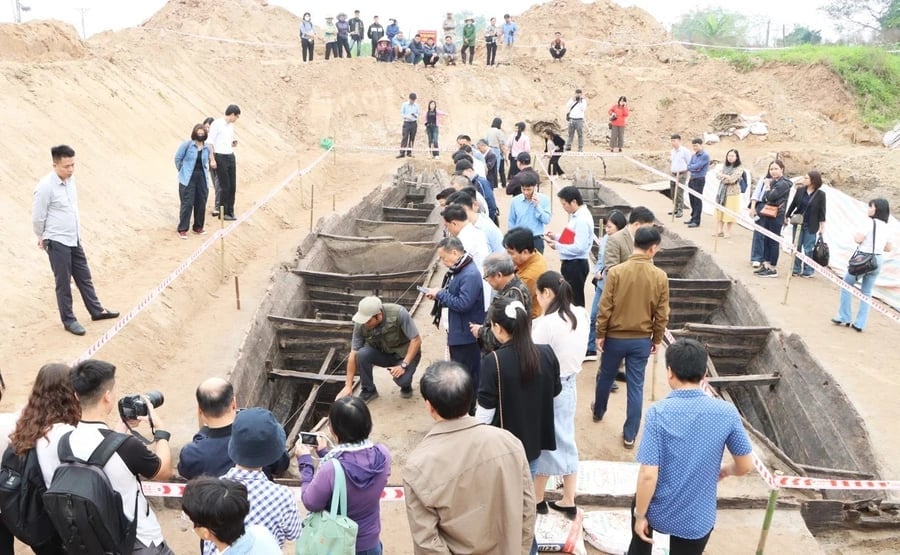
Two ancient boats discovered in Bac Ninh province may date back to the Ly - Tran dynasties.
Initial survey results show that these two ancient boats lie parallel, along the East-West axis, about 2.3 meters apart. Notably, a large wooden beam appears on the East side, connecting the two ends of the boat, suggesting a catamaran structure with a special fixing method, this is a trace located right on the ancient flow of the Dau River, the river closely associated with the ancient citadel of Luy Lau, an important political and trading center during the Ly - Tran dynasties.
After excavating the entire site, researchers determined that these were two intact boat hulls measuring 16.10 m to 16.25 m in length, about 2.20 m in width, and a maximum depth of 2.15 m. The superstructure (cockpit, roof, and lining) may have been lost or dismantled long ago, leaving only the water-filled hull – the part that was always submerged in the riverbed when the boat was in use – remaining.
Scientists agree that the specific age will await the results of C14 analysis, but based on the technique, this type of boat often dates back to early times and can be built in Vietnam, a continuation of the boat building technique of the Dong Son culture through comparing the bottom of the two hulls with the dugout structure (made from a tree trunk) and the mortise and tenon technique.
Based on Chinese and international boat documents, it is believed that the boats date from the 11th to the 14th century (Ly and Tran dynasties), no later than the 15th century, and have technical influence from the South.
Neither boat uses any metal in any of its joints. Instead, the boats are built entirely of wood, joined together using a mortise and tenon technique, combined with wooden wedges and locking pins, a pre-industrial mechanical technique that is highly precise and extremely resistant to twisting and deformation. In particular, the connection between the dugout at the bottom and the raised planks at the bow and stern of the boat is a structure never seen before in any ancient ship model in the world.
The “double hull connection” method, i.e. two independent hulls fixed together by horizontal wooden beams, is a structural feature very similar to modern catamarans, helping the boat to be stable when traveling on the river and able to carry heavy cargo. Up to now, this is the first discovery of a double hull boat structure in Vietnamese archaeology, and may even be the only one in Southeast Asia.
The living heritage of a riverine civilization needs to be preserved.
The two ancient boats are not only isolated archaeological artifacts, but also valuable pieces in the reconstruction of the economic, social and religious life of ancient residents in the Northern Delta. With their large size, high load-bearing capacity and elaborate boat-building techniques, they were likely used for large-scale cargo transport, possibly for religious ceremonies, or for regional waterway trade.
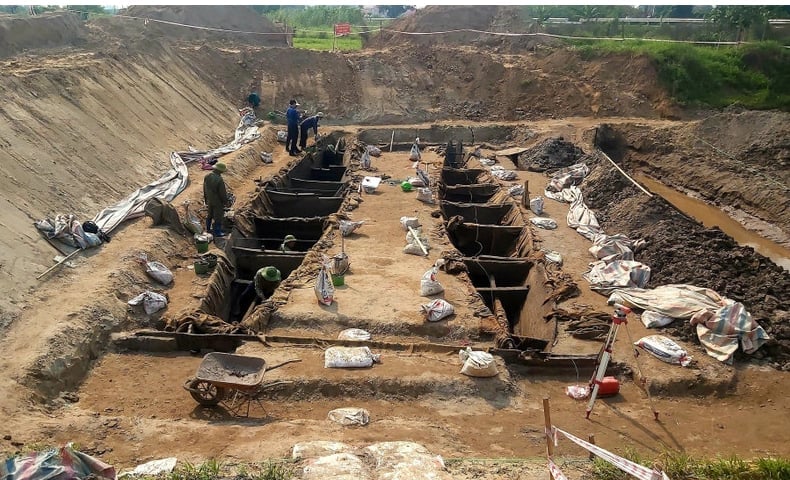
It is necessary to preserve and promote the value of cultural heritage.
Given the special value of this discovery, the Department of Culture, Sports and Tourism of Bac Ninh province immediately implemented an emergency on-site conservation plan. The measures include: covering with geotextiles; fixing with soil, sand and wood similar to the environment; gradually filling in layers to avoid the impact of microorganisms and protect the wooden structure. In parallel, the locality is coordinating with research institutes to propose solutions for display and interpretation using 3D technology, restoring small-scale models, organizing archaeological and cultural tours, and reenacting ancient waterway festivals.
The two ancient boats in Bac Ninh are living evidence of a once flourishing indigenous craft tradition, and are the key to unlocking new insights into the maritime history and riverine civilization of ancient Vietnam. This is not only an important contribution to Vietnamese archaeology, but also has international significance, and is eligible to be included in the national heritage dossier, and may even lead to a proposal for regional protection.
Preserving heritage is not only the responsibility of the cultural sector, but also an opportunity to connect the past with the present, building a future of development associated with national identity and traditional knowledge. The more unique the heritage, the more it needs to be preserved and promoted properly.
Source: https://nongnghiepmoitruong.vn/thuyen-co-o-bac-ninh-dau-an-va-hanh-trinh-gin-giu-di-san-d751254.html



![[Photo] National Assembly delegates visit President Ho Chi Minh's Mausoleum](https://vphoto.vietnam.vn/thumb/1200x675/vietnam/resource/IMAGE/2025/5/5/9c1b8b0a0c264b84a43b60d30df48f75)


![[Photo] Solemn opening of the 9th Session, 15th National Assembly](https://vphoto.vietnam.vn/thumb/1200x675/vietnam/resource/IMAGE/2025/5/5/ad3b9de4debc46efb4a0e04db0295ad8)







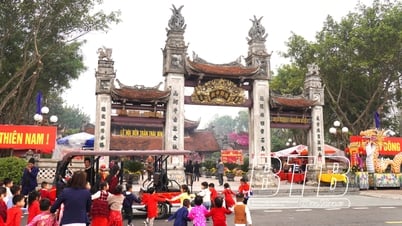






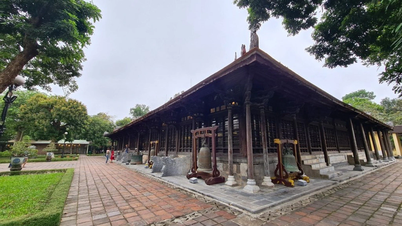



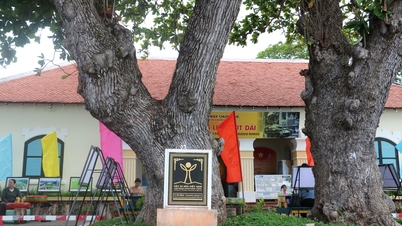







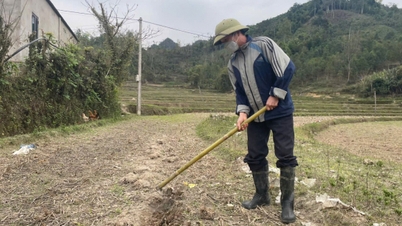


![[Photo] Bus station begins to get crowded welcoming people returning to the capital after 5 days of holiday](https://vphoto.vietnam.vn/thumb/1200x675/vietnam/resource/IMAGE/2025/5/4/c3b37b336a0a450a983a0b09188c2fe6)
![[Photo] Vietnam shines at Paris International Fair 2025 with cultural and culinary colors](https://vphoto.vietnam.vn/thumb/1200x675/vietnam/resource/IMAGE/2025/5/4/74b16c2a197a42eb97597414009d4eb8)

![[Photo] General Secretary To Lam receives Sri Lankan President Anura Kumara Dissanayaka](https://vphoto.vietnam.vn/thumb/1200x675/vietnam/resource/IMAGE/2025/5/4/75feee4ea0c14825819a8b7ad25518d8)




























































Comment (0)